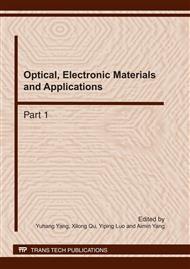p.355
p.360
p.364
p.368
p.373
p.378
p.383
p.388
p.393
Research on Relationship between Residual Stress of Hole Cold Expansion and Process Parameter
Abstract:
The hole cold expansion is a well-known technique used to improve the fatigue life in mechanical structures. An approach named simulation experiment was used to establish the relationships between maximum residual stress and the process parameters in order to quantitatively understand residual stress status around the hole after expansion working. Firstly, Finite Element Method was employed to substitute the physical experiments to get the residual stress distribution of the hole of different expansion ratios, hole diameters and plate heights. Secondly, Excel software was used to obtain the trend curves of maximum residual compressive stress of different parameters. Then the equations of trend curves were obtained based on the least square principle. The results show that the simulation experiment approach is practical to implement and meet the actual accuracy need of engineering, and could establish the foundation for analysis of the fatigue life in mechanical structures.
Info:
Periodical:
Pages:
373-377
Citation:
Online since:
March 2011
Authors:
Price:
Сopyright:
© 2011 Trans Tech Publications Ltd. All Rights Reserved
Share:
Citation:


